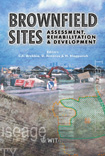Monitoring The Effectiveness Of Remediation: A Case Study From Homebush Bay, Sydney, Australia
Price
Free (open access)
Transaction
Volume
55
Pages
Published
2002
Size
641 kb
Paper DOI
10.2495/BF020031
Copyright
WIT Press
Author(s)
E. Laginestra
Abstract
Monitoring the effectiveness of remediation: A case study from Homebush Bay, Sydney, Australia E. Laginestra Sydney Olympic Park Authority, Australia Abstract Sydney Olympic Park, the main venue of the 2000 Summer Olympic Games, contains world class sporting facilities, residential areas, a commercial centre and extensive parklands. It was previously 760 hectares of degraded land that required extensive restoration and remediation. Remediation of the site commenced in 1992, well in advance of the US Brownfields initiative, and provides useful information for other contaminated land managers in the selection of clean-up options, environmental monitoring and assessment, and adaptive management success. Treatment of the estimated 9,000,000 cubic metres of waste was carried out in-situ, as a preferable alternative to off-site transfer. This has necessitated ongoing monitoring to ensure the remediation options chosen remain effective in protecting environmental health and safety. The monitoring program has provided baseline data and management tools for long term assessment. Compilation of historic site data provided the necessary context for new monitoring programs, initiated to give a more complete environmental picture, which included leachate toxicity monitoring, sediment quality triad studies, sediment core analysis, bioaccumulation assessment and bioremediation studies. Promising initial results indicate attenuation of leachate toxicity, undetectable impacts on the surrounding environment due to site influences and identification of optimum conditions for bioremediation. The monitoring has also suggested streamlining some monitoring and highlighted areas of potential concern, assisting in the prioritisation of resource allocation.
Keywords




